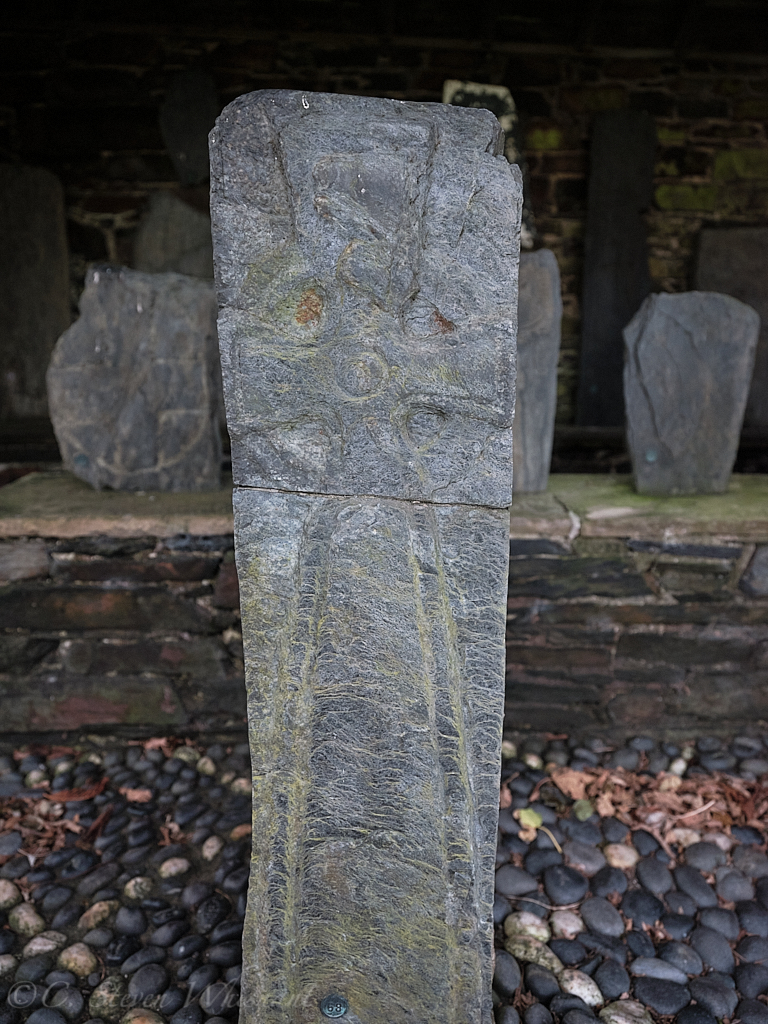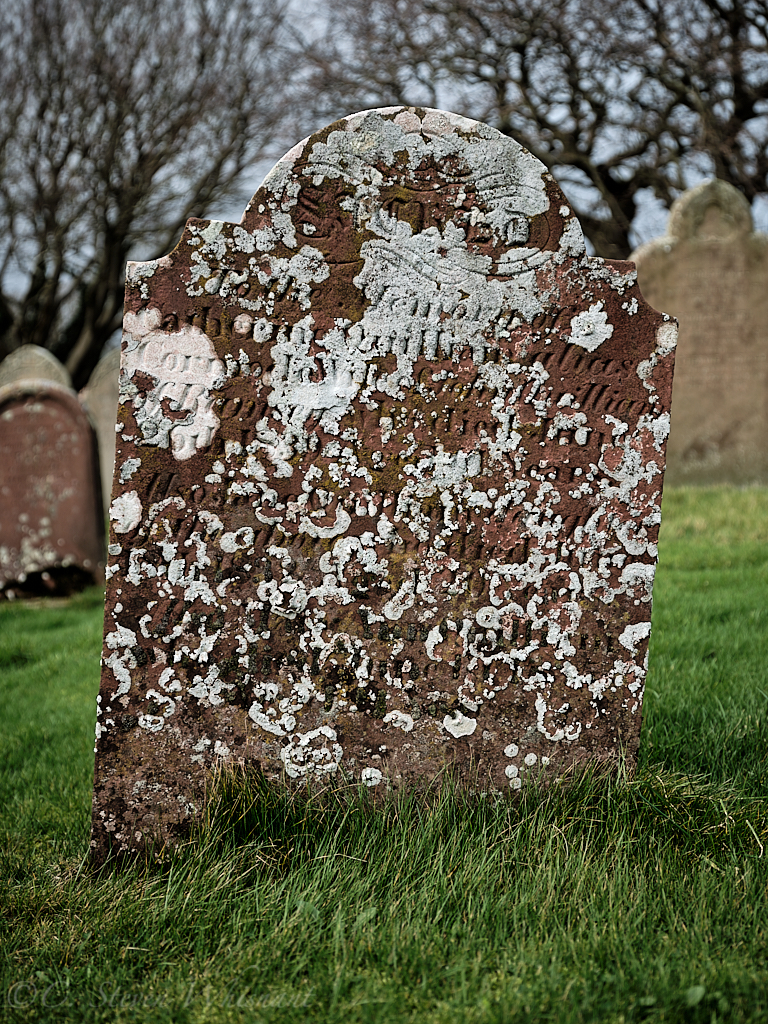After reading about this church, we just had to visit.
To one side of the of the churchyard is a small shed filled with Celtic crosses gathered from all over the island. This seems to be the museum of such things.
There are stone crosses here dating from the 6th to the 13th centuries. An important place since the 5th century after St. Maughold was thrown out of Ireland by St. Patrick and came here. It wasn't until the 12th century when King Olaf I declared it a church.
Amazing place to see all these carved stones. We are walking around an open church yard with these ancient items. In the US, they'd be locked up in an official museum somewhere.
If you've been wondering where Celtic crosses come from, I still can't tell you, but I can tell you that they have been here for a very only time.
They must have been deeply carved to retain the tezt so clearly after all these years.
Others are difficult to impossible to read, but the weathering and lichens have made them a striking sight.
I found these interesting for the symmetry of the gravesite and for the family name of Jelly. Not often you encounter the Jelly family.
Inside, the church is simple and elegant.
The loft has a pipe organ and the parish stone cross is safely inside.
The altar is simple and to the point. The stained glass is the only thing here that feels the least bit fancy.
The present church dates from around the 11th to 12th century though considerably extended in later centuries. It may have been the seat of a 11th century bishopric. Small 13th century windows and the stonework of a 14th century east window can be seen. Extensive reconstruction took place in 1900 (with some later modernisation) which as the parish guide says 'have in no way impaired the atmosphere of peace and permanence to be experienced within its walls'.
A place you nee to visit on your trip to this storied island.












No comments:
Post a Comment
We enjoy hearing from our readers.